Table of Contents
ToggleIceland Tourism 2025 Explore Stunning Landscapes, Adventure & Culture
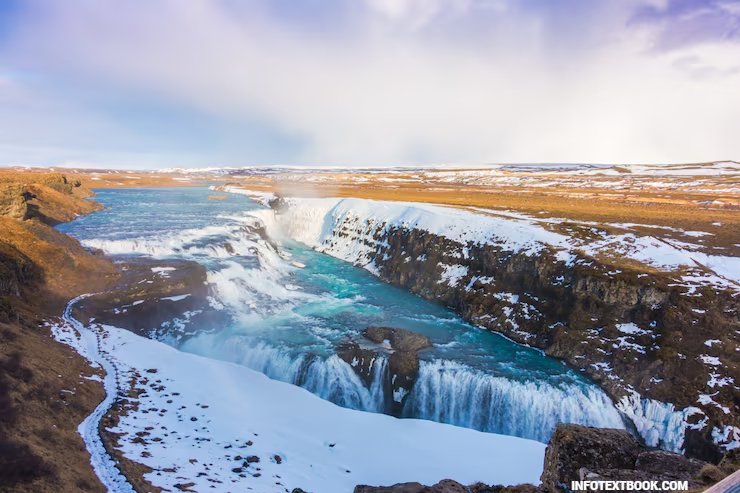
Introduction to Iceland Tourism
Iceland has emerged as one of the most sought-after destinations for travelers seeking unique natural beauty and unforgettable experiences. Iceland Tourism offers visitors a chance to explore glaciers, volcanoes, geysers, hot springs, and the mesmerizing Northern Lights. With its pristine landscapes and rich culture, Iceland attracts millions of tourists every year, making it a top choice for 2025 travelers.
Top Attractions in Iceland
When planning a trip, certain landmarks are must-visits. The Blue Lagoon, a geothermal spa, provides a relaxing experience in stunning surroundings. Gullfoss Waterfall and Thingvellir National Park are perfect for photography and nature enthusiasts. Additionally, Jokulsarlon Glacier Lagoon offers breathtaking views of floating icebergs. Exploring these iconic sites is an essential part of Iceland Tourism.
Adventure Activities for Thrill-Seekers
Iceland is a paradise for adventure lovers. Tourists can go glacier hiking, ice climbing, snowmobiling, and volcano trekking. Whale watching and puffin spotting are popular seasonal activities along the coast. For those who love the sea, snorkeling or diving in Silfra Fissure provides a unique experience between tectonic plates. Adventure tourism is a key part of the Iceland Tourism experience, combining excitement with the country’s natural beauty.
Icelandic Culture and Cuisine
Beyond nature, Iceland offers a rich cultural experience. Reykjavik, the capital, is known for its modern architecture, museums, and lively music scene. Traditional Icelandic cuisine, including dishes like lamb stew, skyr, and fresh seafood, offers a taste of local flavors. Cultural festivals and art exhibitions are also popular, giving tourists a glimpse into Icelandic heritage. Understanding local customs enhances the overall Iceland Tourism experience.
Travel Tips for Visiting Iceland
To make the most of your trip, consider the following tips: travel between May and September for better weather, rent a car for exploring remote areas, and carry layered clothing for sudden weather changes. Booking accommodations in advance is essential, especially near popular attractions. Familiarity with Iceland’s natural environment ensures a safe and enjoyable journey, making your visit unforgettable.
Introduction to Iceland Tourism
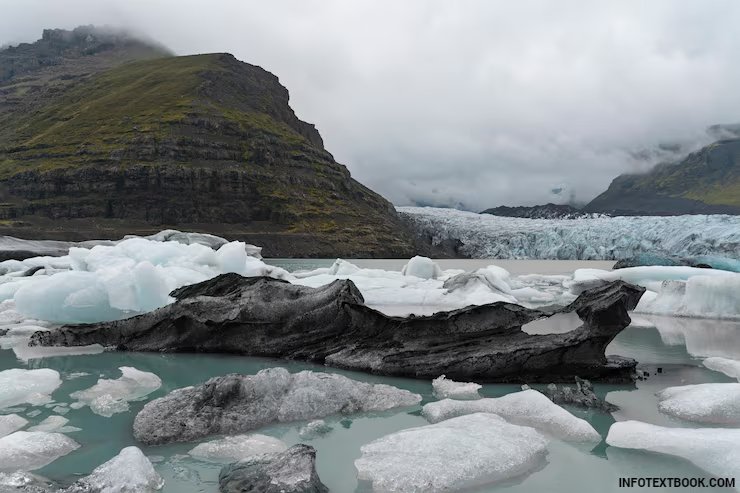
Introduction to Iceland Tourism
Iceland, often called the “Land of Fire and Ice,” has rapidly become one of the most popular destinations for travelers seeking extraordinary natural beauty and unique experiences. Iceland Tourism offers an unparalleled combination of glaciers, volcanoes, geysers, hot springs, and waterfalls, making it a paradise for nature lovers and adventure enthusiasts alike. Visitors are drawn to the country not only for its dramatic landscapes but also for the chance to witness phenomena like the Northern Lights and the Midnight Sun.
One of the defining features of Iceland Tourism is the accessibility of its natural wonders. Unlike many destinations where scenic spots are hidden or require long hikes, Iceland provides relatively easy access to some of the world’s most stunning attractions. The Golden Circle route, which includes Thingvellir National Park, Gullfoss Waterfall, and the Geysir geothermal area, is a must-visit for anyone exploring the country. In addition to famous landmarks, Iceland is dotted with off-the-beaten-path gems, such as the tranquil fjords of the north and secluded black sand beaches in the south, allowing tourists to experience serenity and adventure in equal measure.
Adventure activities are a key attraction in Iceland, further enhancing the appeal of Iceland Tourism. From glacier hiking and ice climbing to whale watching and snowmobiling, there are experiences to suit every thrill level. The country’s unique geological formations also make it a hotspot for photographers and travel bloggers looking to capture otherworldly landscapes. Seasonal phenomena, including the Aurora Borealis in winter and the Midnight Sun in summer, provide additional reasons to plan a visit during different times of the year.
Apart from its natural beauty, Iceland’s culture and heritage enrich the tourism experience. Reykjavik, the vibrant capital, combines modern architecture with a rich artistic and musical scene. Traditional Icelandic cuisine, which emphasizes fresh seafood and locally sourced ingredients, offers visitors a taste of the country’s culinary traditions. Festivals, cultural events, and museums provide insight into the history and folklore that have shaped Icelandic society over centuries.
Iceland Tourism is not just about visiting a destination; it’s about immersing yourself in a land of contrasts and natural wonders. With its breathtaking landscapes, thrilling adventures, and rich culture, Iceland promises experiences that leave a lasting impression on every traveler. For anyone planning a trip in 2025, Iceland remains a top choice for an unforgettable journey.
Top Attractions in Iceland A Guide for Travelers
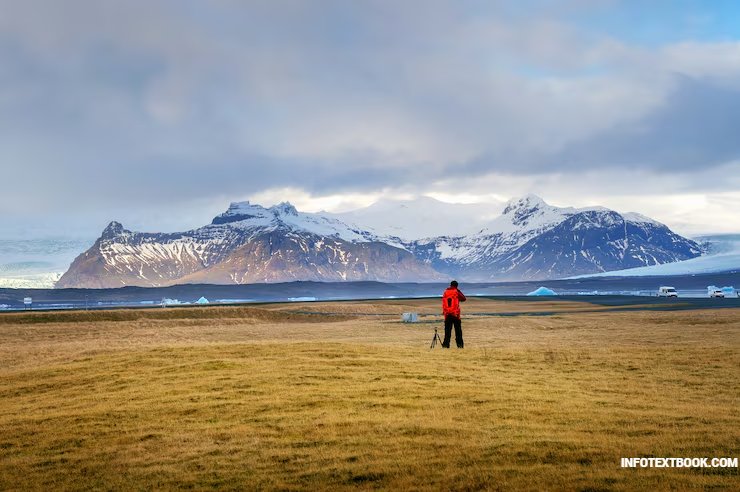
Top Attractions in Iceland A Guide for Travelers
Iceland is a land of dramatic landscapes, natural wonders, and unique cultural experiences. For anyone planning a trip, exploring the top attractions in Iceland is a must to fully appreciate this remarkable destination. Known for its glaciers, volcanoes, waterfalls, and geothermal springs, Iceland has something for every type of traveler. Iceland Tourism has grown rapidly in recent years, attracting adventurers, nature enthusiasts, and photographers from around the world.
One of the most iconic sites is the Blue Lagoon, a geothermal spa located in a lava field near Reykjavik. The warm, mineral-rich waters offer a relaxing and rejuvenating experience amidst breathtaking surroundings. Visitors can enjoy spa treatments, swim in the milky-blue waters, and take in the scenic landscapes, making it one of the must-visit attractions in Iceland.
Another highlight is Gullfoss Waterfall, part of the famous Golden Circle. This massive two-tiered waterfall showcases Iceland’s raw natural power and is a favorite among tourists and photographers. Nearby, Thingvellir National Park provides a unique historical and geological experience. Located on a rift between the North American and Eurasian tectonic plates, it offers hiking trails, breathtaking scenery, and insight into Iceland’s rich cultural heritage.
For glacier lovers, Jokulsarlon Glacier Lagoon is a dream destination. The floating icebergs and serene waters create an almost otherworldly setting. Visitors can also take boat tours to get closer to the icebergs or explore nearby Diamond Beach, where pieces of ice wash up on black sand shores.
Other attractions include Seljalandsfoss and Skogafoss Waterfalls, both of which are accessible and perfect for photography enthusiasts. The volcanic landscapes of Landmannalaugar and the black sand beaches of Reynisfjara offer adventure and exploration opportunities, making them essential stops for anyone interested in Iceland Tourism.
Iceland’s charm lies not only in its natural beauty but also in the experiences it offers. From geothermal spas and powerful waterfalls to glaciers and volcanic landscapes, the top attractions in Iceland provide unforgettable memories for travelers. Whether you are seeking adventure, relaxation, or cultural insight, Iceland’s attractions promise an extraordinary journey.
In conclusion, planning a visit to these iconic sites is crucial for a successful Iceland trip. With its stunning landscapes and unique attractions, Iceland Tourism continues to captivate visitors and remains a top destination for travelers in 2025.
Adventure Activities for Thrill Seekers
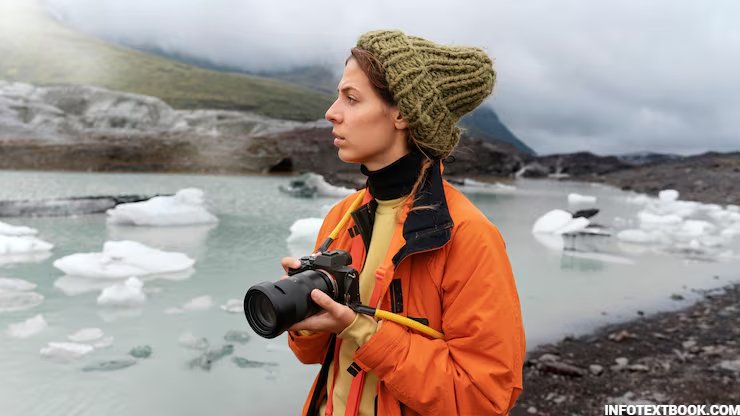
Adventure Activities for Thrill Seekers in Iceland
Iceland is a paradise for travelers seeking adventure. Known for its dramatic landscapes and unique natural phenomena, the country offers countless opportunities for thrill-seekers. Adventure tourism in Iceland has grown rapidly, attracting tourists from around the world who want to experience the extraordinary. Iceland Tourism is not just about sightseeing; it’s about engaging with nature in its rawest, most exciting forms.
One of the most popular activities for adventure enthusiasts is glacier hiking. Iceland’s glaciers, such as Vatnajökull and Sólheimajökull, provide a breathtaking backdrop for hiking expeditions. Guided tours ensure safety while exploring ice caves, crevasses, and frozen waterfalls. For those who love extreme experiences, ice climbing offers the perfect combination of skill, strength, and excitement.
Volcano trekking is another must-try activity. Iceland sits on a volcanic hotspot, and visitors can hike active and dormant volcanoes to witness lava fields, craters, and geothermal landscapes. For snow and speed lovers, snowmobiling on glaciers provides a thrilling ride while taking in the stunning scenery.
Water-based adventures are equally popular. Snorkeling or diving in Silfra Fissure, located in Thingvellir National Park, allows visitors to swim between the tectonic plates of Europe and North America. Whale watching tours along the Icelandic coast offer the chance to see majestic marine life, including humpback and minke whales, in their natural habitat. Puffin spotting along the cliffs adds a charming wildlife encounter to your journey.
Adventure tourism in Iceland also includes activities like kayaking through glacial lagoons, horseback riding on Icelandic horses, and exploring volcanic caves. Each activity is designed to immerse travelers in the unique environment while providing unforgettable memories. Local tour operators focus on safety, sustainability, and providing knowledgeable guides to enhance the experience.
For travelers planning an action packed vacation, Iceland Tourism offers an ideal mix of adrenaline-pumping activities and awe-inspiring scenery. Whether it’s hiking, climbing, snowmobiling, or diving, the country ensures every adventurer finds something extraordinary.
Adventure activities in Iceland provide an unparalleled experience for thrill-seekers. By combining natural beauty with exciting outdoor pursuits, Iceland Tourism has become a premier destination for those looking to explore, challenge themselves, and create lifelong memories in 2025.
Icelandic Culture and Cuisine A Deep Dive into Iceland Tourism
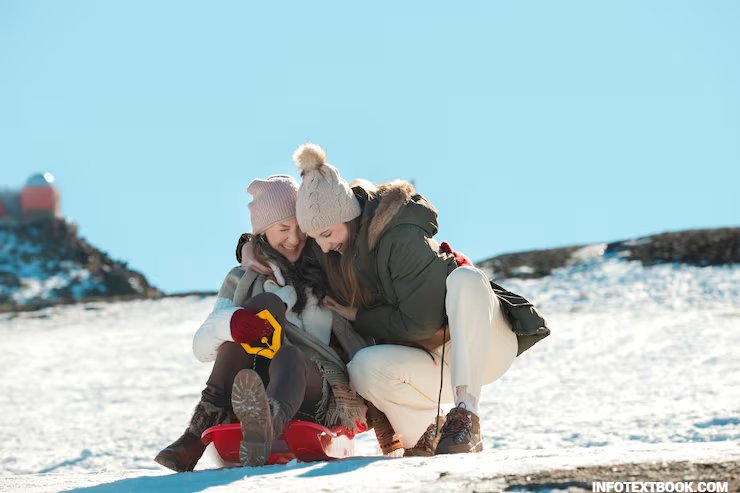
Icelandic Culture and Cuisine A Deep Dive into Iceland Tourism
Iceland is not only renowned for its breathtaking landscapes and natural wonders but also for its rich and unique culture. When exploring Iceland Tourism, understanding the local customs, traditions, and culinary delights is essential to fully appreciate the country’s heritage. From music and art to traditional foods, Iceland offers a cultural experience unlike any other.
One of the key aspects of Icelandic culture is its deep connection to nature. Festivals, folklore, and daily life are often inspired by the surrounding environment, including glaciers, volcanoes, and the sea. Reykjavik, the capital city, is the cultural hub of Iceland, offering a mix of modern art galleries, museums, and music venues. Annual events such as the Reykjavik Arts Festival and Iceland Airwaves Music Festival showcase both traditional and contemporary Icelandic creativity, drawing tourists from around the world. Engaging in these cultural experiences enhances any trip focused on Iceland Tourism.
Cuisine is another integral part of Icelandic culture. Traditional dishes are crafted from fresh, locally sourced ingredients, often emphasizing fish, lamb, and dairy products. Popular dishes include skyr, a creamy yogurt-like dairy product; lamb stew, known for its rich flavor; and hákarl, fermented shark, which is considered an acquired taste. Sampling these dishes provides tourists with a genuine connection to Icelandic heritage and culinary traditions. Local bakeries and cafes also serve unique treats like rye bread baked in geothermal heat, offering a deliciously authentic experience.
Food in Iceland is closely linked with sustainability and respect for the environment. Many restaurants focus on using seasonal and locally sourced ingredients, reflecting the Icelandic philosophy of harmony with nature. Culinary tours, farmers’ markets, and cooking workshops allow travelers to experience these traditions firsthand, making food an essential component of Iceland Tourism.
Icelandic culture also emphasizes literature and storytelling. From medieval sagas to contemporary novels, stories about heroes, nature, and folklore are central to the nation’s identity. Engaging with these narratives, whether through museum visits or cultural events, adds depth to the travel experience.
Exploring Icelandic culture and cuisine is an essential part of any Iceland Tourism journey. By immersing in the local traditions, tasting authentic dishes, and experiencing the vibrant arts scene, travelers gain a richer understanding of this remarkable island nation. Iceland’s unique blend of natural beauty, history, and culinary heritage ensures that every visitor leaves with lasting memories
Travel Tips for Visiting Iceland

Travel Tips for Visiting Iceland
Iceland is a land of stunning landscapes, unique natural phenomena, and unforgettable adventures. To make the most of your trip, it’s important to plan carefully. Whether you are visiting the geysers, glaciers, or hot springs, these travel tips will ensure a smooth and enjoyable experience while exploring Iceland Tourism.
First, timing is crucial. The best months to visit are between May and September, when the weather is milder and the days are longer. Summer provides an opportunity to explore the highlands and enjoy outdoor activities like hiking, whale watching, and glacier tours. For those hoping to witness the Northern Lights, late September to early April is ideal. Planning your trip according to the season will enhance your overall Iceland Tourism experience.
Next, transportation is a key factor. Renting a car is highly recommended for travelers who want to explore Iceland independently. While guided tours are convenient, driving yourself allows flexibility to visit remote attractions like Jokulsarlon Glacier Lagoon, the Diamond Beach, and hidden waterfalls. Make sure to familiarize yourself with Icelandic driving rules and weather conditions, as they can change rapidly.
Accommodation is another important consideration. Booking in advance is essential, especially near popular tourist destinations such as Reykjavik, Vik, and Akureyri. Iceland offers a range of lodging options, from budget hostels to luxury hotels and cozy guesthouses. Staying close to nature or near major attractions can save travel time and provide a more immersive Iceland Tourism experience.
Packing wisely is also crucial. Iceland’s weather can be unpredictable, so layered clothing is a must. Waterproof jackets, sturdy hiking boots, and warm accessories like hats and gloves will keep you comfortable during outdoor activities. Don’t forget swimwear for visiting hot springs or geothermal pools, which are a highlight of Iceland Tourism.
Lastly, respect the environment and local customs. Iceland places great importance on preserving its natural beauty. Stick to marked trails, avoid disturbing wildlife, and follow local guidelines when visiting protected areas. This ensures that future travelers can continue to enjoy the breathtaking landscapes and contributes to responsible tourism.
Careful planning, flexible transportation, appropriate accommodations, and mindful packing are essential for an unforgettable visit. Following these tips will help you enjoy the full spectrum of Iceland Tourism, from its awe inspiring natural wonders to its unique cultural experiences.
Final Thoughts

Final Thoughts
Iceland remains one of the world’s most captivating destinations, offering an unparalleled blend of natural beauty, adventure, and culture. From the stunning Northern Lights dancing across the night sky to the serene waters of the Blue Lagoon, every corner of this island nation tells a story of nature’s grandeur. Iceland Tourism continues to grow in popularity because it caters to a wide range of travelers—whether you are seeking adrenaline-pumping adventures, peaceful landscapes, or immersive cultural experiences.
Exploring glaciers, volcanoes, and waterfalls allows visitors to witness the raw power and pristine beauty of Icelandic nature. At the same time, engaging with local culture, sampling traditional cuisine, and attending festivals enriches the travel experience, offering a deeper connection to the land and its people. Adventure enthusiasts will find endless opportunities, from hiking and snowmobiling to whale watching and diving, making every trip truly memorable.
For travelers planning their 2025 journey, Iceland offers not just a destination, but an experience that stays with you long after you leave. With careful planning, respect for the environment, and an adventurous spirit, visiting Iceland promises unforgettable memories. Truly, Iceland Tourism is about embracing the extraordinary, discovering nature’s wonders, and enjoying moments that are as magical as they are inspiring
FAQs Iceland Tourism 2025
Q1. What is the best time to visit Iceland?
The best time to visit Iceland is between May and September when the weather is milder, and most attractions are easily accessible. For Northern Lights viewing, visit between September and March.
Q2. Do I need a visa to travel to Iceland?
Yes, travelers from many countries, including India, need a Schengen visa to enter Iceland. Make sure to apply in advance and have all necessary documents ready.
Q3. What are the must-visit attractions in Iceland?
Top attractions include the Blue Lagoon, Gullfoss Waterfall, Thingvellir National Park, Jokulsarlon Glacier Lagoon, and the capital city Reykjavik. Each offers unique natural beauty and cultural experiences.
Q4. Is Iceland safe for tourists?
Yes, Iceland is considered one of the safest countries in the world for travelers. However, always follow safety guidelines, especially when exploring glaciers, volcanoes, or remote areas.
Q5. What activities can I do in Iceland?
Adventure lovers can enjoy glacier hiking, snowmobiling, volcano trekking, whale watching, and diving in Silfra Fissure. There are also cultural experiences, local cuisine tasting, and scenic road trips.
Q6. What should I pack for a trip to Iceland?
Pack layered clothing, waterproof jackets, sturdy hiking boots, and essentials for cold and unpredictable weather. Don’t forget a camera to capture Iceland’s stunning landscapes.





